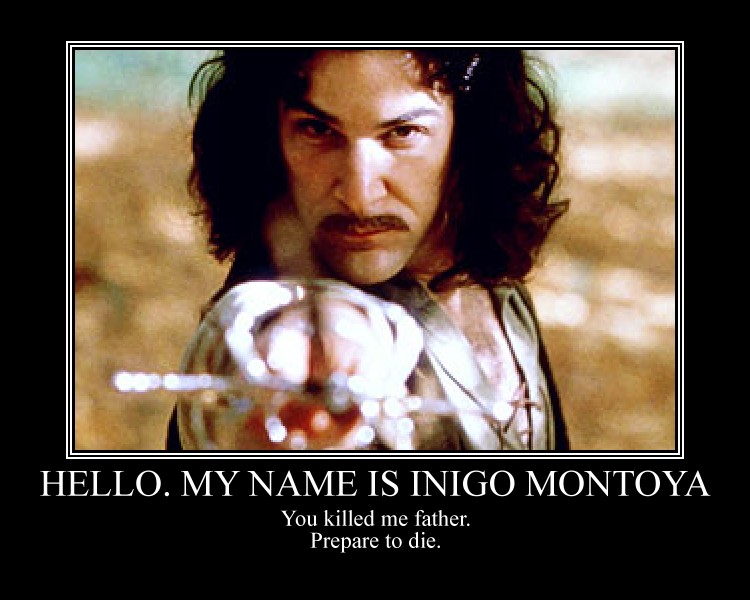Throughout the month of April, I will be creating a series
of posts called “Building a Better Hero”, which focus on character development
for D&D and other tabletop RPG characters. Like the tangled fates of
Protagonist and Antagonist, this series will parallel and intermingle with “Building
a Better Villain”, both of which are part of my attempt at the 2012 April A to
Z challenge.
We begin our look at Building a Better Hero with the
Backstory. A hero’s backstory does more than tell the tale from whence they
came, it helps to establish their motivation and their personality. It is
fallow ground from which grow the hero’s strengths and weaknesses. In the realm
of tabletop gaming, it serves as a touchstone to guide the player in his/her
roleplaying and helps the GM craft situations that are
meaningful/challenging/inspiring for that character.
The backstory as roleplaying tool has its share of pitfalls.
Late last year, Vanir, over at Critical Hits posted about the corruption of backstory from tool to oversimplified justification for bad behavior. The wary
GM would do well to heed his advice. Actually, Vanir has some excellent
suggestions for implementing backstory jiu-jitsu to turn an otherwise unwieldy
backstory bludgeoning back into a tool for deepening the character.
Anyway, players’ approaches to their characters’ backstories
are about as varied as the stories themselves. In my own group, I have one
player whose character is essentially a blank slate. Childhood trauma has “blocked”
much of her memory. Some GMs might feel like this player just didn’t want to
flesh anything out, but that’s not necessarily the case. I have another player
who sits at the opposite end of the backstory spectrum. The tale for one of her
characters involved a complex yarn about illegitimate birth, devil worship, the
murder of her mother followed by the character’s escape with a prized token of
her mother’s memory and so on… Both of these approaches are perfectly valid,
and both can be leveraged to draw the character deeper into the story.
Using these different approaches to backstory as a tool for adventurecraft is simply a
matter of how you, the GM, go about incorporating them. A character with an
extensive, pre-written story offers a wealth of hooks for entangling them in
the adventure. In the case of my own game, Ms. Storytime found out that the
same cult that had murdered her mother was behind the major conflict at the
center of the adventure. With the pre-told stories, figures from the character’s
past, with all their established meaning, can make return appearances. Old
grudges can rear their heads and past loves can be used as a catalyst for
adventure. Backstories are often the playground for a hero's nemises. Archenemies are often born from the shadowy depths of the hero's adolescence. If not, a clever nemesis, will certainly attempt to dredge up as much discomfort as possible from the hero's past.
With the blank slate character, by contrast, the GM has the
opportunity to craft his/her backstory as the game progresses. A character without a written back story doesn't mean they don't have one, just that it is not written down, or hasn't been fleshed out by the player. In many ways, playing through the game becomes a way to build that backstory. In the case of
my particular game, the blank slate character went from being someone whose motivations amounted to “I’m just along for
the ride” to the long-lost princess of such'n'such kingdom that the heroes were actively working to save (the kingdom, not the princess). Blank slate went from a passive rider to someone with a spot in the driver’s seat.
Regardless of which approach a player takes to his/her
character’s backstory, the GM should keep them in the loop as much as possible
when crafting stories that draw upon, or reveal new aspects about that
character’s history. A secret reveal to just the character’s player can both
test the waters for the new information and put that player in charge of
determining the time and place for a more public revelation.



Backstory is something that, I'm afraid, too many players are too "busy" to do or simply just ignore. In my group we run the gamut. We have two players that refuse to put any thought into their character's history and so wind up playing the same character, whether he be a gnome, half-elf, or dwarf. Then you have those you put some thoughts down on paper. And then you have two of us (yes, this is where I fall) that devote pages and pages to backstory.
ReplyDeleteAnd one of our DMs has told me that ones who don't do it at all often wonder why none of the plot hooks seem geared to grabbing their interest.
Yeah, the busy/blank slaters can be a tough nut to crack. I think my blank slate player was an oddity among the type. He actually did write a backstory for his character, but insisted that she didn't remember the majority of it, and then only shared part of it with anyone, including me.
DeleteOf course, if you wanted to be a devious GM, you could start throwing things like previously unknown baby-mammas at the character every time they entered a town.
Love the first picture! (And the second one). Very cool post!
ReplyDeleteKonstanz Silverbow
nothoughts2small.blogspot.com
thewriterace.blogspot.com
A to Z c-host
www.a-to-zchallenge.com
It's been sometime since I've played any RPG, so I don't remember how involved any of our backstories were... it's definitely something to think about now, and one I will elaborate on if and when I get to play again :-)
ReplyDeleteGreat post,
~2
Welcome to the bizarre little corner of my mind! Backstories don't necessarily need to be super involved. Later this month, I plan to write "Q is for Questionnaire" which will detail a set of simple questions that can quickly add flesh to a barebones character.
DeleteThis comment has been removed by a blog administrator.
ReplyDelete